Laboratory experiments in the Coriolis platform with Python¶



Pierre Augier, A. Vishnu (KTH), C. Bonamy, A. Campagne, J. Sommeria, S. Viboud, C. Bonamy, N. Mordant (ERC Watu)...

$\newcommand{\kk}{\boldsymbol{k}} \newcommand{\eek}{\boldsymbol{e}_\boldsymbol{k}} \newcommand{\eeh}{\boldsymbol{e}_\boldsymbol{h}} \newcommand{\eez}{\boldsymbol{e}_\boldsymbol{z}} \newcommand{\cc}{\boldsymbol{c}} \newcommand{\uu}{\boldsymbol{u}} \newcommand{\vv}{\boldsymbol{v}} \newcommand{\bnabla}{\boldsymbol{\nabla}} \newcommand{\Dt}{\mbox{D}_t} \newcommand{\p}{\partial} \newcommand{\R}{\mathcal{R}} \newcommand{\eps}{\varepsilon} \newcommand{\mean}[1]{\langle #1 \rangle} \newcommand{\epsK}{\varepsilon_{\!\scriptscriptstyle K}} \newcommand{\epsA}{\varepsilon_{\!\scriptscriptstyle A}} \newcommand{\epsP}{\varepsilon_{\!\scriptscriptstyle P}} \newcommand{\epsm}{\varepsilon_{\!\scriptscriptstyle m}} \newcommand{\CKA}{C_{K\rightarrow A}} \newcommand{\D}{\mbox{D}}$
Fluids: Navier-Stokes equations
$\p_t \vv + \vv\cdot\bnabla\vv = - \bnabla p + \nu \bnabla^2 \vv,$
plus rotation, density stratification, etc.
(anisotropic) turbulence
Tools and methods:
- theory
- simulations
- experiments

FluidDyn project¶
A project to foster open-science and open-source in fluid mechanics
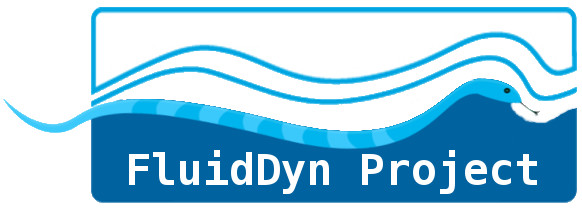
A thesis:
- open-source never so strong,
- new tools and methods allowing collective work,
- possibility of collaborations on good quality research codes (not simple for scientists).
Some FluidDyn Python packages (1)¶
fluiddyn¶
Pure-python code that can be reused in scripts or in specialized FluidDyn packages. Miscellaneous command-line utilities.
fluidfft¶
C++ and Python classes useful to perform Fast Fourier Transform (FFT) in sequential and in parallel.
fluidsim¶
Computational Fluid Dynamics (CFD) Python framework (mainly pseudo-spectral methods).
Some FluidDyn Python packages (2)¶
fluidlab¶
For laboratory experiments. Communication with various hardware devices such as motors, sensors, pumps.
fluidimage¶
Scalable image processing: calibrate cameras, preprocessing images, Particle Image Velocimetry (PIV) and processing of velocity fields.
fluidcoriolis¶
Experiments in the Coriolis platform and Open Data.
fluidfoam¶
Loading, plotting and processing of OpenFoam data.
FluidDyn project¶
Examples for
- Good coding practice: readable and understandable Python code (PEP 8).
- Source control management (Mercurial) and forge (Bitbucket) simple for the new comers.
- Packaging and installation procedures.
- Licenses: depending on the packages, CeCILL-B or CeCILL licenses.
- Documentation sites produced with the standard and up-to-date tools:
Sphinx, Readthedocs, Anaconda and Jupyter. - Unittest and continuous integration with Bitbucket Pipeline and Travis.
Conditions for collaborative development!¶
Numerical simulations, pseudo-spectral methods¶
- periodic: based on Fast Fourier Transforms
- fast and very accurate
Standard method: Fortran codes
- highly efficient (HPC)
- monolythic, highly specialized (nearly one code per research group...)
- not so user friendly
FluidDyn Python packages: fluidfft and fluidsim
- versatile
- user and developer friendly
- efficient (HPC)
fluidfft¶
Fast Fourier Transform (FFT) in sequential and in parallel, with CPU and GPU.¶
Hierarchy of C++ classes to use different FFT libraries.
Cython wrappers of the C++ classes. Cython
.pyxand.pdxfiles produced from template files using the template library mako.Python operators classes (2d and 3d) to write code independently of the library used for the computation of the FFT.
Pythran to speedup critical code. Performance $\simeq$ Fortran.
Commandline utilities (
fluidfft-benchandfluidfft-bench-analysis).Unittest !
fluidsim¶
Python framework to run sequential and parallel (MPI) Computational Fluid Dynamics (CFD) simulations and on-the-fly processing for a variety of problems (Navier-Stokes, Shallow Water, Föppl von Kármán equations, ...).
highly modular, object-oriented structure (solver, state, time stepping, output, ...),
specialized in pseudo-spectral methods (based on fluidfft),
very user friendly,
very efficient (much faster than Dedalus, faster than SpectralDNS).
Laboratory experiments with Python, the example of the Coriolis platform¶
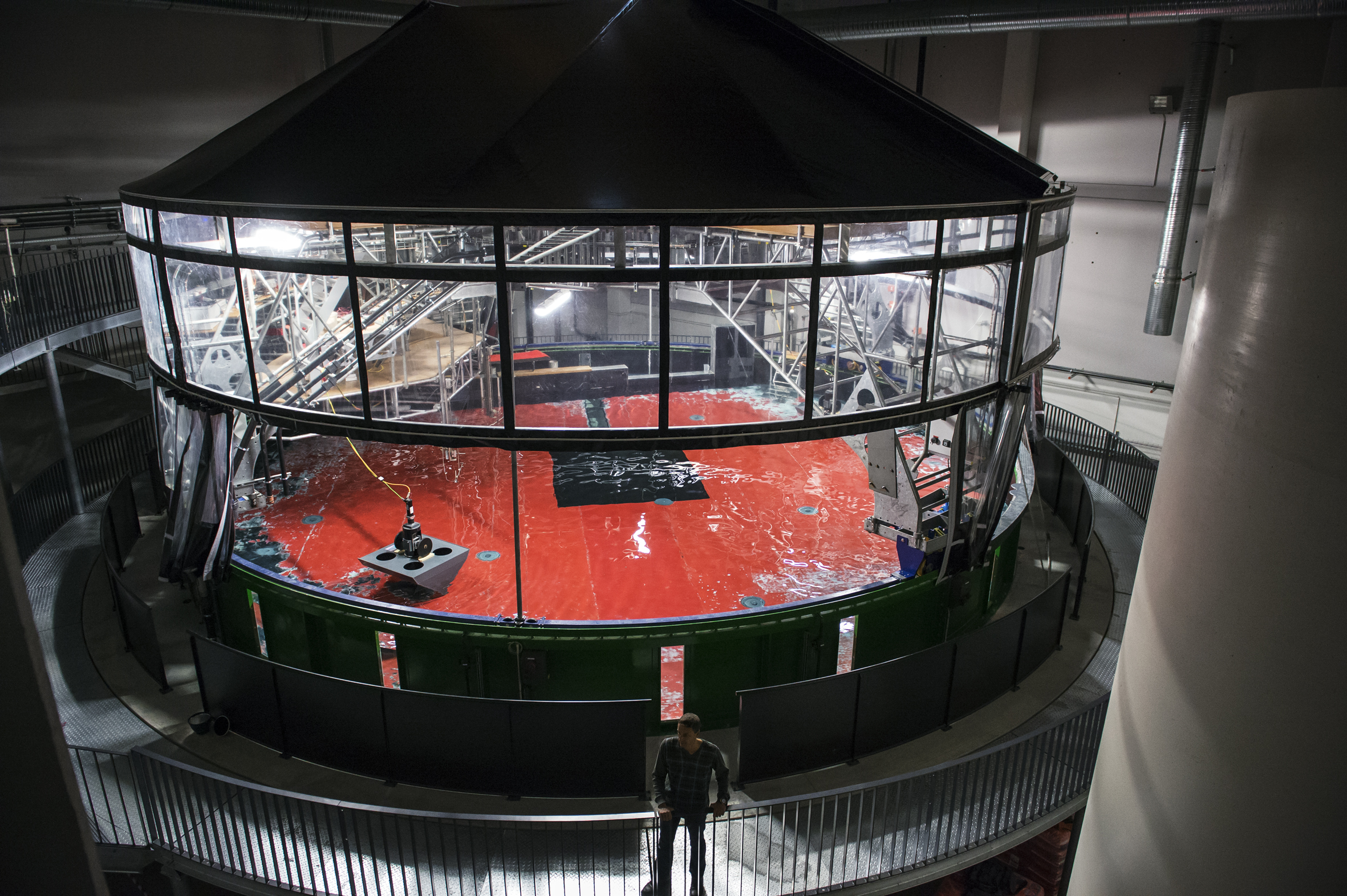
(13 m diameter)
The MILESTONE experiment¶
Stratified and rotating turbulence in the Coriolis platform

2 sets of experiments
Summer 2016 (a collaboration between KTH, Stockholm, Sweden and LEGI).
Summer 2017: focused on mixing without rotation
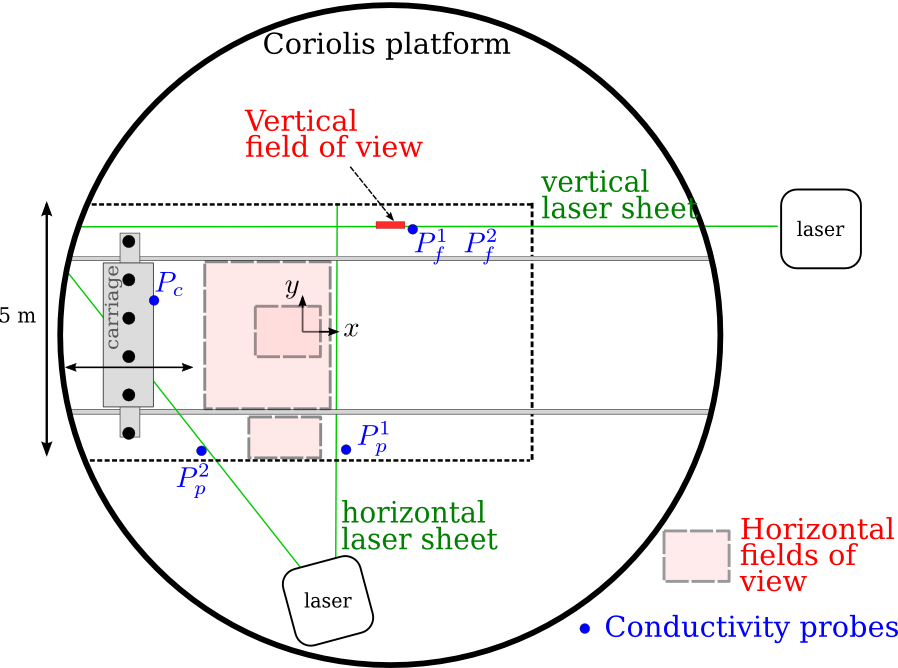 Top view (MILESTONE 2016)
Top view (MILESTONE 2016)
A new carriage for the Coriolis plateform
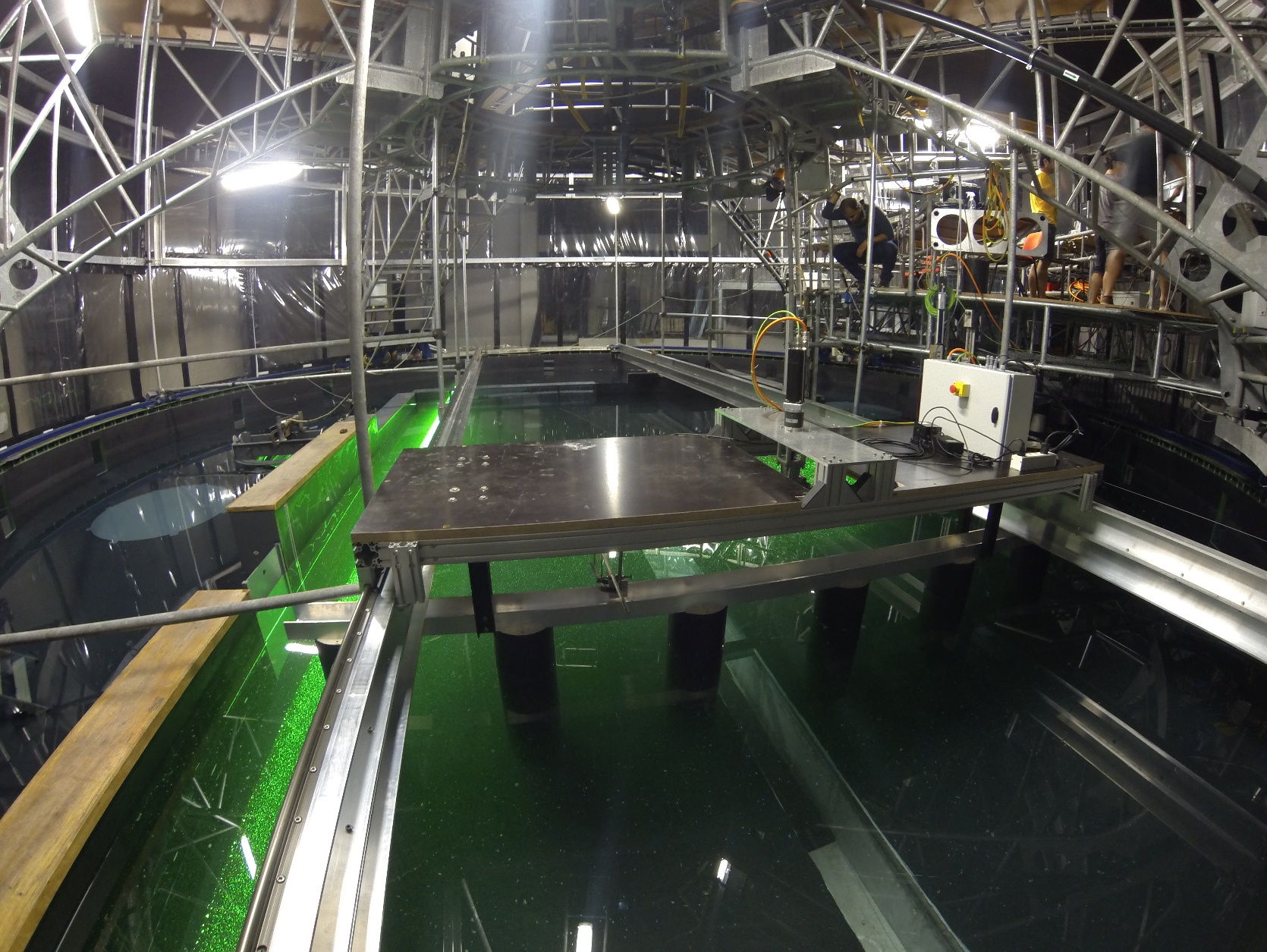
- 3 m $\times$ 1 m
- runs on tracks (13 m long)
- good control in position ($\Delta x<$ 5 mm) and in speed ($U< 25$ cm/s)
Measurements: PIV and probes (density, temperature)
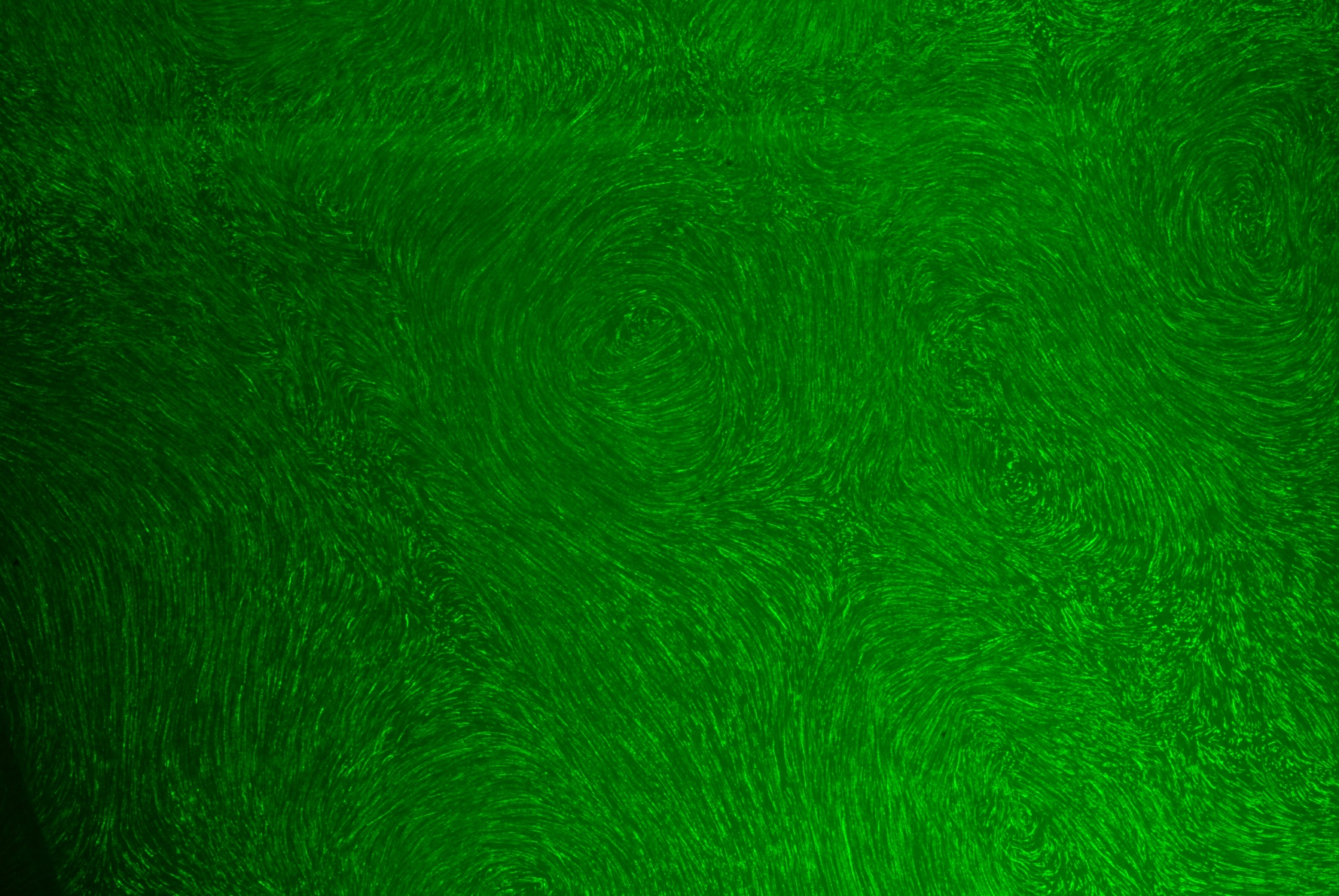

Using computers for laboratory experiments¶
- Many drivers, libraries and software only for Windows
- Labview and Matlab
Using Python and open-source solutions¶
A community of hackers!
Python packages for
- communication protocols: pyserial, pyvisa, modbus, ...
- library wrappers: pydaqnx for NI boards, ...
- GUI: matplotlib, PyQt, Qtgraph, ...
- microservices: rpyc, xmlrcp, ...
async, await and asyncio for asynchronous input/output (see asyncio in autolib's car)
Arduino, Micropython for microcontrollers, Raspberry Pi
Python friendly companies (Labjack for acquisition boards, ...)
Python packages for experiments (control instruments, ...): fluidlab, lantz, place
See also this presentation on Factory Automation with Python...
Example of the carriage in the Coriolis platform¶
Equipment¶
- Motor and its servo drive Lexium LXM32 (Schneider Electric)
- Position sensor: quadrature signal via an acquisition board LabJack U3-HV
Software solutions (in fluidlab and fluidcoriolis)¶
- For the LXM32:
- communication modbus TCP (pymodbus)
- I/O-Scanning (regular ping pong between LXM32 and the computer)
- 3 servers with rpyc (motor, position sensor and carriage)
- control of the carriage via Ipython
- GUI (using a carriage client) with PyQt (made with qtdesigner)
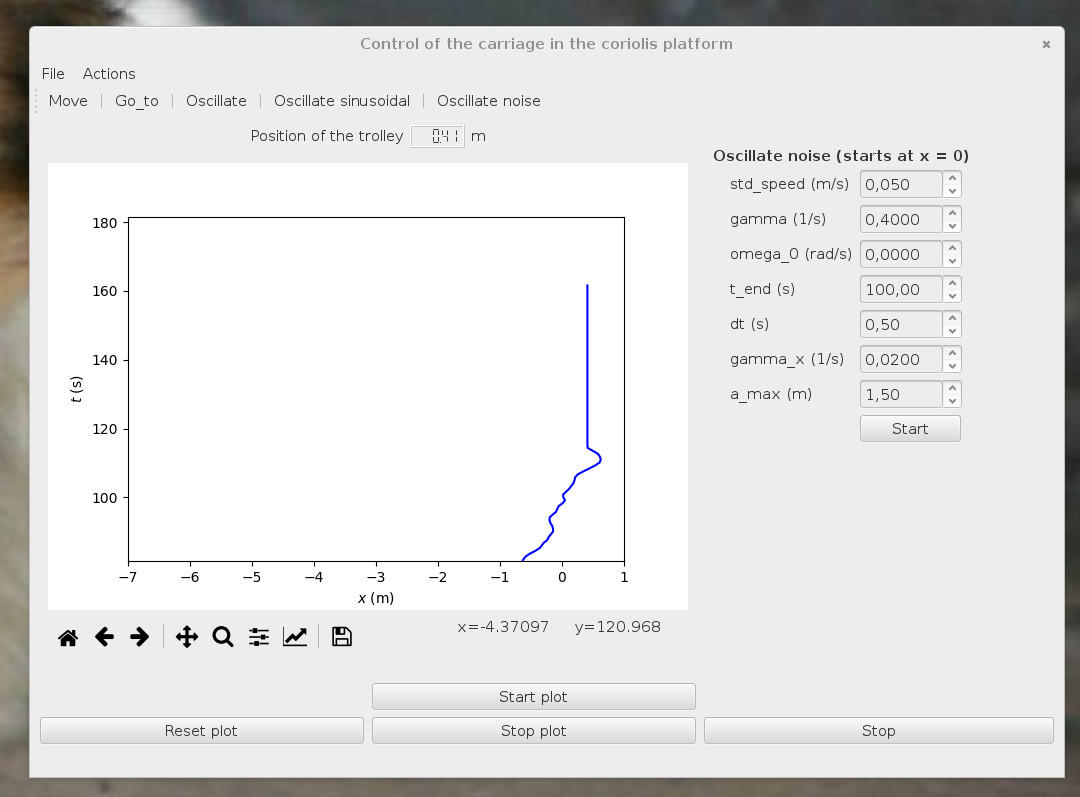
Example of the 3D-2C PIV in the Coriolis platform¶
PIV: Particle Image Velocimetry
Equipment¶
- Labjack T7 acquisition board
- Oscillating mirror
- Powerfull laser
- Cameras
Software solutions¶
Simple functions to control the mirror and trigger the cameras via the T7 board (in fluidlab).
PIV processing with fluidimage
fluidimage: scientific processing of images¶
Many images (~ 20 To of raw data): embarrassingly parallel problem
- Open-source
- Clusters and PC, with CPU and/or GPU
Asynchronous computations
- topologies of tasks
- IO and CPU bounded tasks are splitted
Efficient algorithms and tools for fast computation with Python (Pythran, Theano, Pycuda, ...)
Images preprocessing
2D PIV, scanning PIV, stereo PIV, BOS
Utilities to display and analyze the PIV fields
- Plots of PIV fields (similar to PivMat)
- Calcul of spectra, anisotropic structure functions, characteristic turbulent length scales
Remark: highly inspired by PivMat (F. Moisy) and UVmat (J. Sommeria), that we continue to use, in particular for calibration
Calcul of scanning PIV on the LEGI cluster¶
Example of scripts to launch a PIV computation:
from fluidimage.topologies.piv import TopologyPIV
params = TopologyPIV.create_default_params()
params.series.path = '../../image_samples/Karman/Images'
params.series.ind_start = 1
params.piv0.shape_crop_im0 = 32
params.multipass.number = 2
params.multipass.use_tps = True
# params.saving.how has to be equal to 'complete' for idempotent jobs
# (on clusters)
params.saving.how = 'complete'
params.saving.postfix = 'piv_complete'
topology = TopologyPIV(params, logging_level='info')
topology.compute()
Calcul of scanning PIV on the LEGI cluster¶
Remark: launching computations on cluster is highly simplified by using fluiddyn:
from fluiddyn.clusters.legi import Calcul7 as Cluster
cluster = Cluster()
cluster.submit_script(
'piv_complete.py', name_run='fluidimage',
nb_cores_per_node=8,
walltime='3:00:00',
omp_num_threads=1,
idempotent=True, delay_signal_walltime=300)
On another cluster, for example Froggy (Ciment, GRICAD), change the first line as:
from fluiddyn.clusters.ciment import Froggy
Analysis, production of scientific figures, Open-Data¶
- For one experiments, a lot of different files for different types of data (txt and hdf5 files)
- Classes for experiments and types of data (for example probe data or PIV field).
from fluidcoriolis.milestone17 import Experiment as Experiment17
iexp = 21
exp = Experiment17(iexp)
exp.name
'Exp21_2017-07-11_D0.5_N0.55_U0.12'
print(f'N = {exp.N} rad/s and Uc = {exp.Uc} m/s')
N = 0.55 rad/s and Uc = 0.12 m/s
print(f'Rc = {exp.Rc:.0f} and Fh = {exp.Fhc:.2f}')
Rc = 11425 and Fh = 0.44
print(f'{exp.nb_periods} periods of {exp.period} s')
3 periods of 125.0 s
print(f'{exp.nb_levels} levels for the scanning PIV')
5 levels for the scanning PIV
Studying and plotting PIV data¶
from fluidcoriolis.milestone import Experiment
exp = Experiment(73)
cam = 'PCO_top' # MILESTONE16
pack = exp.get_piv_pack(camera=cam)
piv_fields = pack.get_piv_array_toverT(i_toverT=80)
/home/pierre/16MILESTONE/Data_light/PCO_top/Exp73_2016-07-13_N0.8_L6.0_V0.16_piv3d/v_exp73_t080.h5
piv_fields = piv_fields.gaussian_filter(0.5).truncate(2)
piv = pack.get_piv2d(ind_time=10, level=1)
piv = piv.gaussian_filter(0.5).truncate(2)
piv.display()
_ = plt.xlim([-1.7, 0.5])
_ = plt.ylim([-1.3, 1.3])
Conclusions¶
We can do several things with Python
Even studying fluid dynamics

8 March: International Women Day... And for PySciDataGre ?